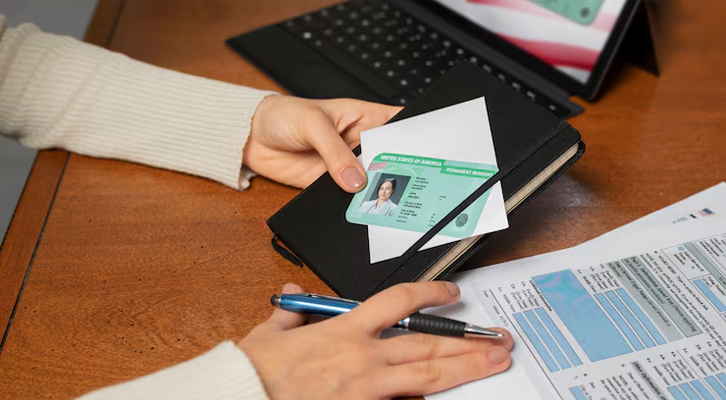

Canada’s temporary work permit system permits foreign workers to work in Canada temporarily. Most employees required to apply must have a current job offer from a Canadian company.
A job offer is crucial since it indicates that a company is interested in hiring you. The company often has to do a Labour Market Impact Assessment (LMIA). According to this file, no Canadian worker is qualified for the post.
While certain employment requires an LMIA, some do not. Jobs sponsored by LMIA are those in which the company has permission to bring in a foreign employee. Finding LMIA employment prospects will raise your chances of receiving a work permit.
A Canadian temporary work permit allows foreign workers to work in Canada for a limited time. The government issues it based on job offers from Canadian employers.
There are two types of jobs under this permit:
Most employers need an LMIA to prove that hiring a foreign worker will not negatively affect Canadian jobs. It ensures fair hiring and protects the local job market.
Working in Canada requires a job offer from an employer. Many positions call for a Labour Market Impact Assessment (LMIA). This proves no Canadian worker is available for the role.
You can find LMIA-approved jobs on:
Among the most in-demand sectors are technology, construction, healthcare, and agriculture. Companies in these fields routinely hire foreign staff. Find out before applying whether your job calls for an LMIA. Certain employments, including those governed by international agreements, is not included under the LMIA.
An LMIA is a document enabling companies to engage overseas employees. It proves that no Canadian is available for the job.
To obtain an LMIA, the employer must:
If the LMIA is approved, the employer will get a confirmation letter. You will need this letter to seek your work visa. Certain jobs covered by free trade agreements may not call for an LMIA.
Before applying, collect these documents:
Maintain accurate and current records to avoid delays.
You can apply online or by paper. The online process is faster and allows you to track your application.
Steps to apply:
Processing times vary by country. Check the IRCC website for updates. Some workers may also need a visa to enter Canada. If approved, you will receive a letter of introduction to show at the border.
Most applicants need to give biometrics (fingerprints and photos). Once you have your application in, you will be scheduled.
Should you intend to work in agriculture, childcare, or healthcare, a medical exam is mandatory. An approved panel physician must conduct the exam. Follow instructions from IRCC carefully.
Your application is reviewed once you apply. Location and workload impact deadlines. Background checks or missing documentation could also cause delays.
If your application is denied, you will get a letter explaining why. You may reapply with corrected information or appeal if eligible.
If approved, you will receive your work permit. Check the details to ensure accuracy. Follow any instructions provided. If applying from outside the country, you may need to show the permit at the border. Once received, you can begin working as per the conditions stated on your permit.
A border agent will verify your paperwork when you get to Canada. You could have to present your work permit approval, visa, and passport. Answer all questions honestly.
As a temporary foreign worker, you have rights. You must be paid fairly and work in safe conditions. Your company cannot force you to labour or grab your passport.
Should your qualifications meet those of a permanent resident, you could be granted one. Programs include Express Entry or the Provincial Nominee Program can help. Check the government website for details.
Finding an LMIA job isn’t too hard if you plan well. Look for legit employers and the right job openings. Fix up your resume and apply properly. Stay updated on LMIA rules. Be patient and keep trying. A solid application boosts your chances. Do your research and follow the process. Ask for help if needed. Stay focused, and you’ll get there.
To apply, you need a job offer from a Canadian employer, a Labour Market Impact Assessment (LMIA) if required, and submit an application online or through a visa office.
Temporary Foreign Worker (TFW) eligibility depends on having a valid job offer from a Canadian employer, meeting health and security requirements, and obtaining a work permit. Some jobs require an LMIA.
The Global Talent Stream and International Mobility Program offer expedited processing. Applying through these programs or having an employer with LMIA-exempt status can speed up approval.
A TFW certificate is not a standard requirement, but eligibility for the Temporary Foreign Worker Program depends on securing a valid job offer and work permit and meeting government criteria.
For each position, the LMIA processing fee is CAD 1,000. Some companies, including those in particular fields like caregiving, might be eligible for fee exemptions.

Thinking about a career in administration in Canada? It's a solid choice with lots of openings. Administrative Assistant Jobs in Canada are available across many different fields, offering a chance to be the organizational backbone...

Looking for work in Canada? The Canada LMIA jobs list is a big deal for many skilled workers hoping to get a job offer and eventually permanent residency. It's not always easy to figure out,...

Thinking about getting a job offer in Canada from India? It's a big step, and understanding the process is key. One common way people do this is by getting what's called LMIA job offer. This...
JobLinksCanada © 2025 All rights Reserved